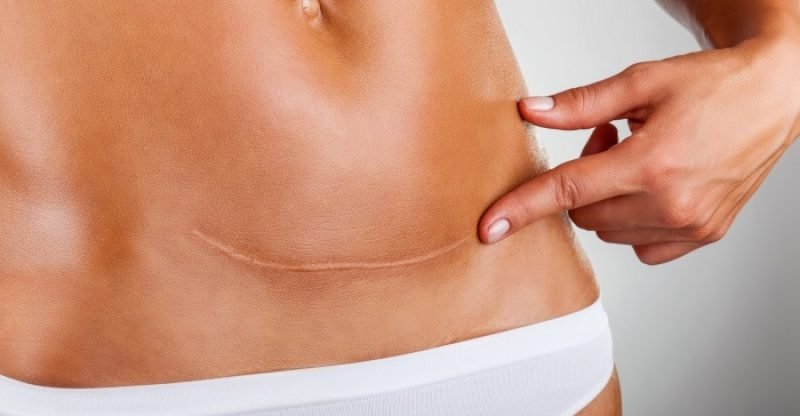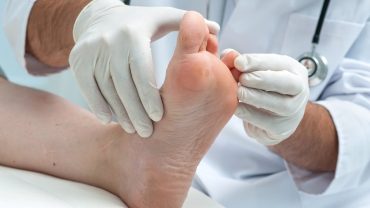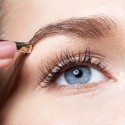10 Science-Backed Natural Ways to Get Rid of Scars
Why Scars Happen
We earn scars from cuts, surgical incisions, burns, and other illnesses or incidents.
Our skin also tells the story of our lives with acne scars and stretch marks.
And whether your scar is a result of a story you love to share or one you’d rather not tell, reducing the appearance of a scar is something many would like to know how to do.
Not everyone wants to keep that scar around as a reminder, especially when it is on your face or another visible area of your body.
So, why not treat that scar and heal your skin?
Scarring occurs when your skin has to repair itself after a trauma or injury.
Fibrous collagen replaces your normal skin tissue, leaving behind skin that looks and sometimes feels different than the surrounding skin.
Many scars, over time, become simple white or brown lines, but some can remain raised, red, and bothersome for years.
If you want to treat your skin while it is healing from a wound in order to reduce scarring, or if you have an older scar that you’d like to see fade, we have some natural remedies that you can use at home.
Really, scar therapy is all about treating your skin well, and there are many natural ways you can assist your skin in repairing itself that will reduce the color and texture of your scars, making them less noticeable.
Our Top 10 Best Natural Scar Treatments will provide you with options for treating all types of scars, including acne scars, keloids, hypertrophic scars, contractures, stretch marks, and many more.
Natural Scar Treatments
Keeping skin hydrated, taking care of your body from the inside out, and only using products that are healthy for your skin will promote healing and reduce scarring for everyone.
If you really want to treat your scar, you must take care of your skin and body.
Mother Nature provides us with many ways to help our skin stay healthy, maintain elasticity, retain moisture, and repair itself after injury.
Our favorite ten natural scar treatments are not only great ways to reduce the appearance of scars, but many of these are wonderful additions to your daily wellness routine (1).
Some scar remedies are more appropriate for smaller and less-raised scars, while others work well for larger and more-textured scars, including keloids and hypertrophic scars.
Silicone
This first scar treatment takes the very best nature provides and combines it with modern science.
Whether in gel or sheet form, silicone is a relatively new, yet highly effective, method for treating scars, particularly from new wounds.
Silicone works to heal the skin by mimicking skin’s natural processes and structures, giving your outermost skin layer something to adhere to while making new cells.
The silicone sheet also relieves tension on the skin during the healing process, which can reduce the likelihood of forming a raised scar.
Silicone is effective in preventing scars from becoming raised and discolored, meaning you are less likely to have abnormal or keloid scarring.
Keloid scarring is generally categorized as firm and fibrous, and most keloids are either raised patches or nodules on your skin.
Some people are more prone to forming keloids than others, and they can form after many different types of injury, including burns, surgery, injections, or acne.
Keloids are simply the result of extra collagen forming during the skin-healing process, creating a scar with more texture and color than normal.
Keloids can be painful, particularly when they are larger or very raised.
They are also often unsightly, as the color can range from very light to dark red or brown.
Silicone sheeting is a particularly effective method for reducing the formation of keloids in the newly-healing skin, as it retards the formation of collagen at the wound site.
Silicone can also be effective in reducing the texture and color of older keloid tissue, but it is best used during the healing process (2,3).
Shea Butter
Raw shea butter contains a high concentration of omega-3 fatty acids, as well as antioxidants.
In addition, it contains Vitamin A, which has anti-inflammatory properties.
All of these combine to create a treatment that can heal, moisturize, and rejuvenate skin cells.
When applied three times a day to the scarred area, shea butter can be effective at preventing the formation of keloid tissue, and it is also a wonderful everyday moisturizer (4).
Its unique makeup will not clog pores but will keep skin moisturized.
Every time you wash your face, pat yourself dry and then rub a small amount of shea butter between your warm palms, then massage the shea butter into your face.
To gain the full benefit, concentrate your massage on acne-scarred areas.
Keeping a wound moist during the healing process is very important.
Shea butter can be used on wounds in combination with a bandage or covering to keep the area moist, which will prevent your scar from becoming larger or darker.
Aloe Vera
Aloe vera has been a popular burn treatment for thousands of years, but did you also know it is a wonderful, natural treatment for scars?
Aloe vera’s healing properties boost your skin’s natural healing processes, reducing the amount of scarring from a wound.
It is also an excellent treatment for acne scarring, and its nourishing and moisturizing properties will actually tone and enhance your skin, giving you a more youthful appearance (5,6,7).
Remember, scar care is really skin care, and many of our natural remedies will enhance your healthy skin as well as areas that are scarred or wounded.
You’ll enjoy the very best results when you use aloe vera straight from the plant leaf.
Remove the aloe plant’s outer covering to reveal fresh gel.
If you don’t have your own aloe vera plant, select pure aloe at your natural foods store or pharmacy.
Aloe should be applied to the scarred area and left to dry, which usually only takes a few minutes.
Reapply the aloe 3-4 times per day for best results.
Cocoa Butter
The highly-concentrated fats in cocoa butter make it an excellent moisturizer that penetrates deep into your skin.
Cocoa butter is a good option for stretch marks, but because it penetrates so deeply, it is also a great treatment for large scars.
Keeping skin well moisturized during times of rapid body expansion, such as during pregnancy and puberty, is the best way to prevent stretch marks from occurring.
Stretch marks appear as indented streaks on your skin, and while they are most often white or light in color, they can be darker.
Stretch marks occur when skin is stretched, particularly in a short period of time.
They are common in pregnant women when the body expands to accommodate the fetus, but they are also common when you gain weight, during puberty, or when your body loses muscle tone and body parts sag.
Certain medical conditions, such as Marfan syndrome and Cushing’s syndrome, can also cause stretch marks.
Apple Cider Vinegar
For anyone who suffers from acne or who has acne scarring, you know that reducing the appearance of these scars can be life-changing, particularly when scarring is very noticeable.
Apple cider vinegar can be one very effective strategy for treating not only acne scars but also active acne.
Apple cider vinegar is a natural astringent with antiseptic properties, making it a good choice for dealing with acne.
Apple cider vinegar can also fade acne scars because it eliminates dead skin cells, smoothing the surface of your skin.
To use this treatment, you can mix apple cider vinegar with either water or honey, then dab the mixture on your acne or scars using a clean cotton swab.
After approximately 10 minutes, wash your face with cool water.
This process should be repeated 2-3 times per day for best results.
Acne scarring is common in those who have severe acne or whose acne presents as cysts or nodes on the skin.
Acne scars are most often small or even deeper pits in your face, and they can be a different color than the surrounding skin.
Because others see your face every day, reducing the appearance of acne scars is important for many people.
When considering acne scar treatment, know that the very best way is to treat acne early to prevent scarring.
Scarring is the result of inflammation and lasting damage done to your skin during the healing process, and by treating acne early, you can prevent scars from forming, or lessen them (8).
Lemon Juice
Lemon juice is another natural treatment effective on acne scars.
Lemon juice is especially useful when acne scarring is discolored or darker than the surrounding skin, as it will naturally lighten skin pigmentation.
Lemons, as well as other citrus fruit, contain large amounts of Vitamin C, a powerful antioxidant.
Vitamin C acts as a natural exfoliant, removing dead skin cells to reveal more youthful skin.
As an antioxidant, Vitamin C minimizes cell damage from free radicals and prompts your skin to produce collagen, both of which, over time, will reduce the appearance of scarring and improve your skin’s texture.
Because vitamin C also slows your skin’s production of melanin, it’s also an effective skin lightener, which can be helpful if you are trying to reduce the color of scar tissue.
Lemon juice should come from fresh lemons.
As with apple cider vinegar, dilute with water (especially if you have sensitive skin) and apply with a clean cotton ball.
After a short time, rinse with cool water. Apply daily for best results.
Tea Tree Oil
Tea tree oil has been used for centuries for its natural healing and wellness powers.
This oil, which is harvested from a type of myrtle tree called Melaleuca alternifolia and is native to Australia, has natural properties that combat germs, bacteria, fungus, and viruses.
It has long been used as an effective treatment for acne, and the use of tea tree oil in healing acne scars is quite effective.
Tea tree oil’s real benefit, though, is in the treatment of hypertrophic scars (9).
To use tea tree oil on scars, mix a few drops with a carrier oil such as coconut or olive (both of which are also good for your skin), and apply it directly to the scar a few times per day.
You can also create a mask by mixing plain yogurt and a few drops of tea tree oil.
Apply the mask to the scarred area of your skin and let it sit for 20 minutes.
Rinse well. This is a good therapy to use once a week, or as needed.
Onion Extract Gel
There are a few over-the-counter treatments that make use of the healing properties of plants, and this remedy is a good example of that.
A popular scar treatment you can buy at most pharmacies is Mederma Scar Gel.
This topical gel’s ingredients include onion extract gel, which promotes healing and significantly improves the color, texture, and softness of new scars (10).
Onion extract is a good option for treating burns, which often lead to hypertrophic scars.
Hypertrophic scars may look somewhat similar to keloids, but are not as raised or hard in texture.
They are the result of trauma to deep layers of skin tissue, such as from a burn, cut, or piercing.
Hypertrophic scars are darker in color, usually red, and they often still contain nerve endings which makes them itchy and sometimes painful.
To keep hypertrophic scars from becoming bothersome, scar treatments may be necessary to flatten them, and some may wish to lighten their color, as well (11,12).
Vitamin E
Like its relative, Vitamin C, Vitamin E can be effective for helping to reduce the pigmentation of scar tissue, helping it to appear less noticeable.
Whether a keloid, hypertrophic, or other types of the scar, Vitamin E contains large amounts of antioxidants, which protects your skin from free radicals and promotes the production of healthy skin cells.
Like Vitamin C, it helps with hyperpigmentation and can help scars appear lighter over time.
Vitamin E oil is also an excellent moisturizer, so it can be used as a part of your daily skincare regimen, as well.
Because Vitamin E oil can be heavy and therefore could clog pores, especially in acne-prone skin, opt for a cream that contains Vitamin E.
Vitamin E is a good treatment for other skin disorders, such as eczema, too.
Honey
Honey is another long-trusted natural scar and wound treatment.
Some kinds of honey, such as manuka honey, are known to have antibacterial properties, and honey is a wonderful moisturizer.
Honey’s sticky texture means it will adhere to skin and not simply run off like oils and other products.
After applying a thin layer of warmed honey to the scar tissue, cover with a clean bandage.
This will keep the honey from getting on you and your clothes, as well as allow the honey to protect your skin.
Change this dressing daily, and you should start to notice healthier-looking skin underneath, soon.
You can also make a scrub for your skin by creating a mixture of honey and crystallized sugar.
Apply to the scar and rub for 5 minutes, then rinse with warm water.
Not only will your skin be moisturized and exfoliated, but the massage will stimulate your skin’s recovery process and break up connective tissue in scars that make them tight and firm.
Medical Options for Scar Removal
If the natural treatment route has not been successful in reducing the appearance of your scar, there are other, more medically-traditional methods you can pursue to treat scar tissues.
While these methods are certainly more expensive than natural remedies, they may be something to consider if other methods have failed to produce the result you are seeking.
For those with raised scars, steroid injection therapy can help to smooth out keloid tissue and hypertrophic scars in order to flatten out the scar tissue.
This therapy generally involves a series of injections over time, and they can be painful.
Cryotherapy, where the raised keloid tissue is frozen off using liquid nitrogen, is also an option, usually in conjunction with other treatments, such as pressure garments and laser treatments (13,14,15).
Surgery is perhaps the most radical of medical options for treating keloids.
The raised scar tissue can be removed, and flatter skin sutured together.
This is usually only done when the existing keloid is causing major problems or pain.
Those who are prone to developing keloidal tissue are likely to have keloid regrowth, so the relief offered by surgery may be short-lived.
Laser scar revision uses high-energy light to treat a variety of scar types.
Lasers can be effective at removing redness and flattening scar tissue.
Depending on the type of scar tissue and the type of laser light used, lasers either target the outermost layer of skin, removing it to expose healthy, new skin, or focus on improving the structure of underlying skin layers, thus reducing the appearance of the scar tissue.
Chemical peels remove the top layer of skin, leaving smoother skin behind.
This method works best for superficial scars, as it does not penetrate below the outermost layer of skin.
Injecting soft tissue fillers, such as collagen or other fats, into indented scars, like pockmarks, is also an effective treatment for smoothing damaged skin.
Another treatment designed to improve the overall look of skin, and which can be effective in reducing the appearance of some scars, is dermabrasion.
This technique, which removes more than just the first layer of skin using a brush or rough-edged wheel, is usually performed on the face but can be used in other areas.
Once the outer layers are removed, the skin regrows in new layers, giving you a smoother surface.
Pressure bandages and massage are less-invasive methods for treating scar tissue.
Form-fitting pressure bandages have been used for many years to treat scars, particularly contracture scars, which are the result of burned skin.
If used regularly over the course of several months, pressure bandages have been known to flatten scars.
They are also used widely with severe hypertrophic scars (16).
Regularly massaging an area beginning just after the injury can help keep scar tissue from forming rigidly, thus reducing the overall stiffness and texture of a scar during its formation.
For some types of scars, there are, unfortunately, few options for treatment.
Contracture scars, or burns, are the most difficult to treat, particularly when the scar involves the underlying muscles and nerves.
Burn scars may lighten over time, but contractures will not disappear.
When considering medical intervention in scar treatment, you must weigh the benefits over the possible drawbacks.
If you are prone to severe scarring, surgical procedures or injections may just create more scar tissue, and other methods may only give temporary or slight results.
You must decide if the cost of these procedures, both financially and otherwise, is worth the results you may or may not achieve.
Starting with natural remedies before turning to more invasive methods will also give you insight into how to take care of your skin every day.
Do’s and Don’ts
Use our natural scar treatments to reduce the appearance of your scar, treat your skin well, and be sure that this is part of a larger plan to take care of your body inside and out.
Remember a few simple rules for treating your scars, and you can’t go wrong.
- Keep skin hydrated to promote healing and reduce scarring.
- Keep wounds moist to prevent scars from forming.
- Always wear sunscreen to avoid exposing wounds and healing skin to harsh UV rays.
- Don’t pick at healing skin, or you may make scars worse.
- Be patient, as healing takes time.
If you use these natural treatments and follow a few rules, your scars will fade over time and become just a gentle reminder of your injury or past event.
FDA Compliance
The information on this website has not been evaluated by the Food & Drug Administration or any other medical body. We do not aim to diagnose, treat, cure or prevent any illness or disease. Information is shared for educational purposes only. You must consult your doctor before acting on any content on this website, especially if you are pregnant, nursing, taking medication, or have a medical condition.
HOW WOULD YOU RATE THIS ARTICLE?






